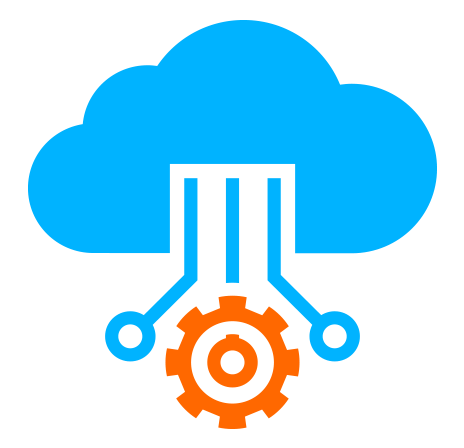 Server
Colocation
Server
Colocation
 CDN
Network
CDN
Network
 Linux Cloud
Hosting
Linux Cloud
Hosting
 VMware Public
Cloud
VMware Public
Cloud
 Multi-Cloud
Hosting
Multi-Cloud
Hosting
 Cloud
Server Hosting
Cloud
Server Hosting
 Kubernetes
Kubernetes
 API Gateway
API Gateway

In the last few years, the demand for computational power has skyrocketed—especially in fields like artificial intelligence (AI), deep learning, and data analytics. According to Grand View Research, the global cloud computing market is expected to reach over USD 1.6 trillion by 2030, growing at a compound annual rate of more than 15%. A huge part of that growth comes from businesses and researchers who no longer rely on traditional CPUs but instead turn to GPU servers to accelerate training and inference tasks.
But here’s the thing—owning and maintaining GPU hardware is expensive and restrictive. High-performance GPUs like NVIDIA A100 or H100 can cost thousands of dollars each, not to mention the added burden of cooling, maintenance, and constant upgrades. This is why more professionals and enterprises are choosing to rent cloud GPU servers instead of purchasing them outright.
If you’re someone exploring deep learning model training, AI research, or data-intensive workloads, renting GPU servers in the cloud can help you scale effortlessly, pay only for what you use, and focus on innovation instead of infrastructure.
Let’s dive deeper into how cloud GPU hosting works, why it’s transforming the deep learning ecosystem, and how you can leverage it for your next big project.
A cloud GPU server is essentially a virtual machine hosted on a cloud infrastructure that is equipped with one or more Graphics Processing Units (GPUs). These GPUs are optimized for high-performance parallel computation, making them ideal for tasks like training deep neural networks, running simulations, video rendering, or even scientific computing.
Unlike CPU-based systems, GPUs are designed to handle thousands of simultaneous threads. This makes them perfect for deep learning, where large datasets and complex model architectures require massive computational capacity.
In standard cloud hosting, your server relies mostly on CPU cores and general-purpose memory. It’s suitable for running websites, databases, or lightweight applications. But when it comes to AI workloads—which require matrix multiplications, tensor operations, and iterative model training—GPUs outperform CPUs by several folds.
For instance, training a neural network that takes 10 hours on a CPU might take just 30 minutes on a GPU server. That’s the kind of performance leap businesses and researchers can’t ignore.
Let’s be real—buying GPUs is a major capital expense. A single NVIDIA H100 GPU can cost upwards of $25,000, and that doesn’t even include the supporting infrastructure. By opting for GPU rental in the cloud, you shift from a CAPEX (capital expenditure) model to an OPEX (operational expenditure) one. You pay only for what you use—whether it’s for a few hours, days, or months.
This flexibility is particularly useful for startups, freelancers, and research teams who need powerful computation but not on a full-time basis.
One of the biggest advantages of cloud computing is scalability. Deep learning projects often start small but grow quickly as models evolve and datasets expand. Renting GPU servers in the cloud allows you to scale up or down instantly—without the need for new hardware purchases.
You can start with a single GPU for testing and move up to multi-GPU clusters for full-scale model training—all in a few clicks.
With cloud GPU hosting, your resources are available anywhere, anytime. Whether your team is in India, the US, or Europe, you can collaborate seamlessly on the same project. Most providers offer web-based dashboards and APIs, allowing you to manage workloads remotely.
Cloud GPU servers are optimized for low latency and high throughput. Many providers deploy GPUs from leading brands like NVIDIA, ensuring that you always have access to the latest architectures such as A100, H100, or RTX 4090. These servers can drastically cut training time and help you iterate faster on your models.
When you rent a cloud GPU server, the provider handles everything—from hardware maintenance to software updates and cooling. This frees you from the complexities of managing IT infrastructure and lets you focus purely on model development and deployment.
Training large-scale AI models requires enormous processing power and memory bandwidth. With GPU cloud hosting, data scientists can train models on massive datasets in hours instead of days. This speed is critical for areas like computer vision, speech recognition, and generative AI.
Academic researchers can use on-demand GPU rentals to run experiments without needing to purchase expensive hardware. It enables reproducibility, faster iterations, and cost control across multiple projects.
Beyond AI, industries like animation, architecture, and engineering rely on GPU servers for rendering 3D graphics, running simulations, and visualizing data models. Cloud GPU hosting offers scalability and accessibility for these intensive tasks.
For companies working with big data or real-time analytics, GPU-powered servers accelerate computation and reduce lag. This helps in faster decision-making, anomaly detection, and predictive analytics.
When selecting a provider for cloud GPU rental, here are key factors to consider:
1. GPU Type & Performance – Ensure the provider offers the latest GPUs (like NVIDIA A100, H100, or RTX series) suitable for your workload.
2. Pricing Model – Look for pay-as-you-go plans or reserved instances depending on your usage.
3. Data Security & Compliance – The provider should offer encryption, data backup, and compliance with GDPR or ISO standards.
4. Scalability Options – Choose providers that let you easily scale GPU counts, memory, and storage.
5. Support & Integration – Check if the platform integrates with frameworks like TensorFlow, PyTorch, and Kubernetes for smooth deployment.
Popular names in the cloud GPU hosting market include AWS (EC2 P4 instances), Google Cloud (A2 instances), Microsoft Azure, and Cyfuture Cloud, which offer dedicated GPU-based cloud servers optimized for AI workloads at competitive prices.
The scalability of GPU cloud servers lies in their elasticity and distributed architecture. You can:
- Run multiple experiments in parallel without hardware constraints.
- Dynamically allocate GPU clusters based on model size and complexity.
- Integrate cloud storage for seamless data management.
- Automate the training pipeline using orchestration tools.
This approach not only enhances performance but also reduces time-to-market for AI applications. For startups, it means faster prototyping; for enterprises, it means scalable, production-grade AI systems.
Consider a company developing an AI-based video analytics solution. Initially, their on-premise setup could process only 10 videos a day. After migrating to GPU cloud servers, they could process over 200 videos daily—all without purchasing new hardware. This shift improved both efficiency and cost management while allowing the team to focus on improving the model accuracy rather than dealing with system bottlenecks.
Conclusion
In the age of artificial intelligence, speed and scalability are the real differentiators. Renting cloud GPU servers gives you instant access to powerful computational resources without heavy investment or infrastructure complexity. Whether you’re training deep learning models, building generative AI tools, or running high-end simulations, GPU cloud hosting empowers you to move faster, scale smarter, and innovate freely.
So, if your next AI project is waiting to take off, skip the hardware hassles. Rent a cloud GPU server, deploy your model, and watch your ideas transform into high-performance reality—without limits.

Let’s talk about the future, and make it happen!
By continuing to use and navigate this website, you are agreeing to the use of cookies.
Find out more


